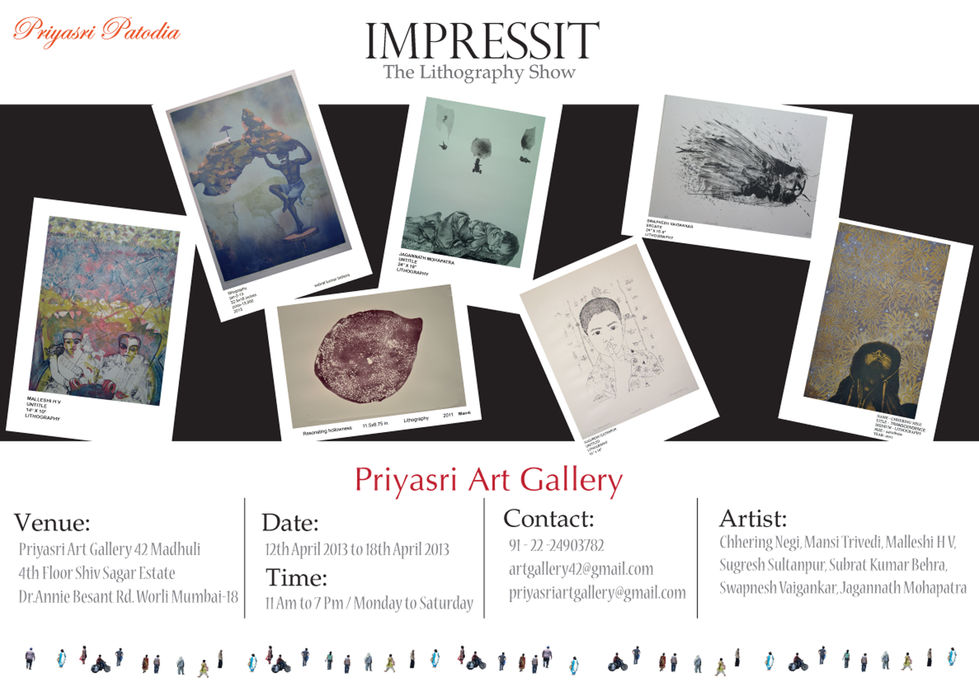IMPRESSIT - The Litho Show
Year
2013
Artists
Chhering Negi , Mansi Travedi , Jagannath Mohapatra , Sugresh Sultanpur, Malleshi H V, Subrat Kumar Behra , Swapnesh Vaigankar
About the Exibition
Lithography is a printmaking technique based on the natural resistance between oil and water. Traditionally, artists drew directly onto a slab of limestone with a greasy crayon or ink. Today, metal plates, typically zinc or aluminum are more common, and artists can also use film or special transfer paper to create designs without marking the plate directly.
Once the image is complete, it is fixed with a dilute acid that transforms the visible design into a latent image. The plate is then moistened with water, which is repelled by the oily design and retained only in the blank areas. Ink adheres to the greasy design, while the dampened areas repel it, allowing for a clean transfer of the image.
There are two main printing methods in lithography: direct and offset. In direct lithography, the image is printed straight from the plate, resulting in a mirror image of the original design. In offset lithography, the plate transfers the image to a rubber roller, which then prints onto paper producing a final impression that matches the artist's original drawing.
Modern photo-lithography builds on this process using light-sensitive chemicals. A transparent positive of the design is projected onto a coated plate; exposed areas harden, while unexposed parts remain soft and absorb ink. This method allows for high-precision reproduction and remains a key component in both fine art and commercial printmaking.
This exhibition highlights lithography's evolution from traditional stone techniques to contemporary innovations, while celebrating its unique balance of precision, creativity, and process.




